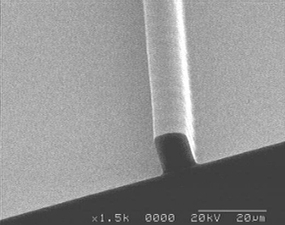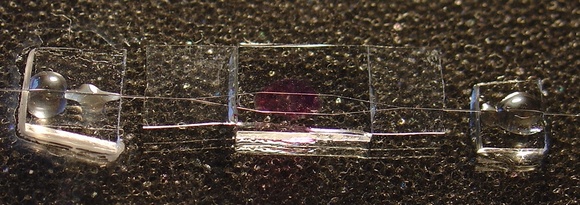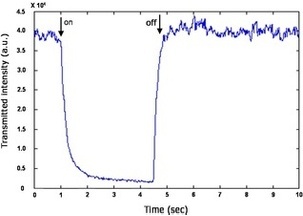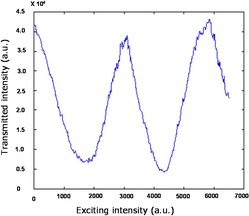|
Principal Investigator: András Dér and Pál Ormos
Recently, we have reported the first integrated optical application based on a miniature Mach-Zehnder interferometer demonstrating a real switching effect by bacteriorhodopsin (efficiency higher than 90%) due to the M-state. Our results also imply that the refractive index change of the K state (9x10-4) is high enough for fast switching.
 
Scanning electron micrograph images of the Mach-Zehnder interferometer: Side view of the Y-branch (right), cross-sectional view of a cleaved single strip (left). 
The ready-to-use device with the purple bR adlayer on the middle part and with singlemode optical fibers fixed at the two cleaved ends. 
A schematic representation of the experimental setup.  
The figures show the all-optical switching effect by the M-Z interferometer covered with a bR film as an adlayer (left). Sinusoidal modulation of the transmitted red light as a function of exciting light intensity (right). Guided light: diode laser at 670 nm, exciting light: Ar-ion laser at 488 nm. Reference: Der A., Valkai S., Fabian L., Ormos P., Ramsden J.J., Wolff E.K. Integrated Optical Switching Based on the Protein Bacteriorhodopsin Photochem Photobiol. 83, 1 (2007). |

